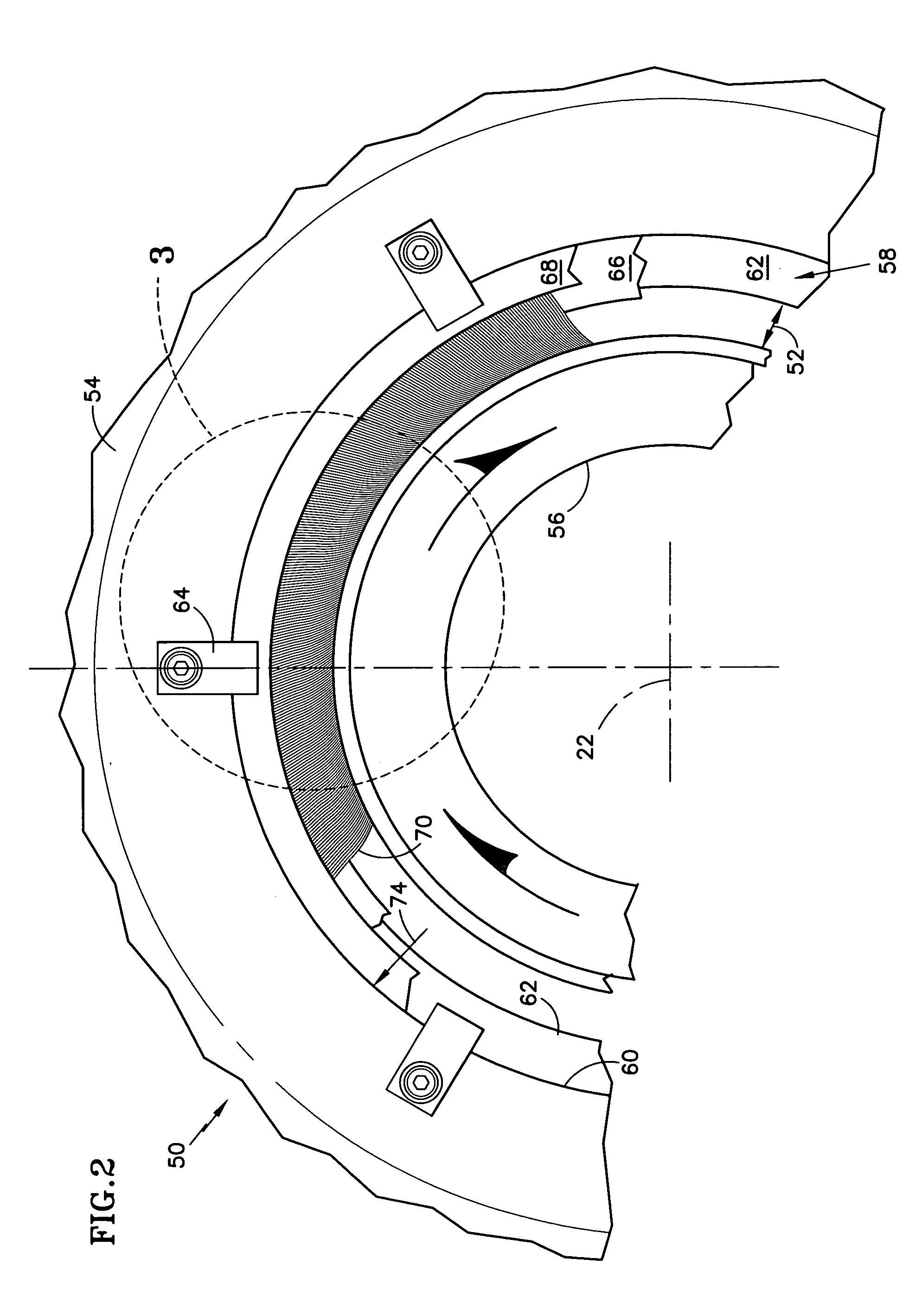Gap sealing arrangement
a gas turbine engine and sealing arrangement technology, applied in the direction of engine sealing, climate sustainability, sustainable transportation, etc., can solve the problems of fluid leakage, the most prevalent leakage, and the negative impact of fuel burn of gas turbine engines, so as to achieve the effect of reducing the overall weight of the seal
- Summary
- Abstract
- Description
- Claims
- Application Information
AI Technical Summary
Benefits of technology
Problems solved by technology
Method used
Image
Examples
Embodiment Construction
[0020]A gas turbine engine 10 of FIG. 1 includes in series from front to rear, rotating low-pressure 12 and high-pressure 14 compressors, a stationary combustor 16 and rotating high-pressure 18 and low-pressure 20 turbines. Each section is disposed about a central, longitudinal axis 22 of the engine 10 and enclosed within cylindrical casing structures 24. The turbines 18, 20 are coupled to the compressors 14, 12 via one or more centrally mounted, concentric shafts 26. A forward most fan 28 may be driven directly by a shaft 26 along with the low-pressure compressor 12 or driven independently by a gearbox 30 attached to a shaft 26.
[0021]Ambient air 32 is drawn into the engine 10 by the fan 28 and immediately directed into two fluid streams: a bypass fluid 34 and a working fluid 36. The bypass fluid 34 is directed radially outboard of the casing structure 24. The working fluid 36 is pressurized in the compressors 12, 14 and directed into the combustor 16, where fuel is injected and the...
PUM
 Login to View More
Login to View More Abstract
Description
Claims
Application Information
 Login to View More
Login to View More - R&D
- Intellectual Property
- Life Sciences
- Materials
- Tech Scout
- Unparalleled Data Quality
- Higher Quality Content
- 60% Fewer Hallucinations
Browse by: Latest US Patents, China's latest patents, Technical Efficacy Thesaurus, Application Domain, Technology Topic, Popular Technical Reports.
© 2025 PatSnap. All rights reserved.Legal|Privacy policy|Modern Slavery Act Transparency Statement|Sitemap|About US| Contact US: help@patsnap.com



